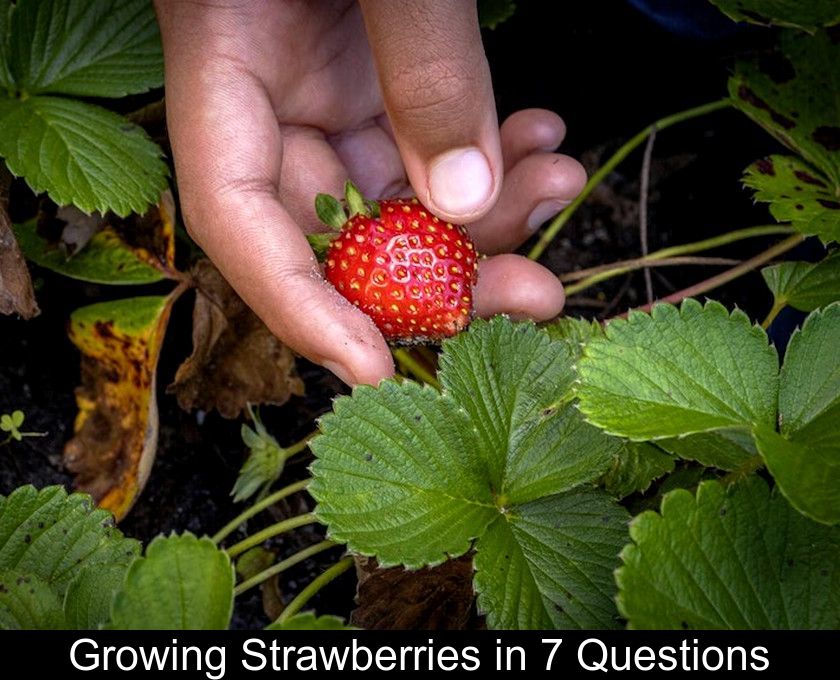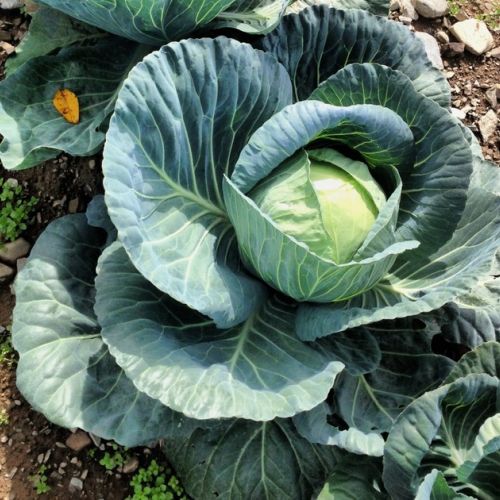Growing Strawberries In 7 Questions
"Strawberries are common plants in our vegetable gardens, but they also grow spontaneously in the woods and on slopes. If you haven't yet tasted the pleasure of freshly picked strawberries from the garden, we explain how to grow strawberries in 7 questions."
What are the characteristics of strawberry plants?
The strawberry is a perennial herbaceous plant of the Rosaceae family that is cultivated for its fruits. Its scientific name is Fragaria vesca. It is a melliferous plant, visited by bees.
Strawberries can be recognized by the terminal tooth of their leaves, which is as long or longer than its two neighbors (unlike the leaves of the false strawberry).
They also have the particularity of producing numerous stolons, also called "shoots" (these are elongated horizontal branches, bearing buds and which can root to give birth to new plants).
It is a species native to Europe and temperate Asia, found from Turkey to China, as well as in North America. This plant, which has long been harvested in the woods, was only introduced quite late into gardens, around the 16th century.
Which variety of strawberry to choose?
There are over 600 varieties of strawberries, among which non-remontant and remontant varieties must be distinguished, capable of producing fruits almost continuously.
Among the non-remontant varieties, the favette has the advantage of being very early and producing large, very sweet fruits. It is harvested as early as May.
The gariguette, which is harvested in early June, is renowned for its elongated, highly fragrant fruits.
Among the remontant varieties, we can mention Nova Gento, Mara des bois characterized by its perfume of wild strawberries, Ostara or Reine des vallées.
How to grow strawberries?
Strawberries prefer a cool and rather acidic soil. Provide them with a soil rich in humus and well-drained, possibly adding river sand and peat if the soil is too compact.
Also note that they are very demanding plants, which quickly deplete the soil and must therefore be moved to a new location every 3 years or so.
As for exposure, they will appreciate a sheltered and sunny location.
When to plant strawberries?
The best planting period for strawberries to obtain optimum yield is in June and July, but transplants can be done as early as April or in October.
Leave a distance of 60 to 80 cm between rows and 30 to 35 cm between plants on each row.
For a better harvest, it is recommended to pour diluted nettle or comfrey manure into the planting hole or to put a handful of crushed nettle or comfrey leaves at the bottom of the planting hole, but not in direct contact with the roots.
What are the maintenance tips for strawberry plants?
Two to three weeks after planting, it is necessary to mulch the strawberry plants with hay, straw, dry leaves, or ferns. This mulch, with a thickness of 3 to 5 cm, prevents the fruits from touching the ground.
This helps to limit rot and weeds and slows down evaporation. You can thus space out watering. Water preferably early in the morning, on average once a week.
Note: this plant is sensitive to spring frosts. It can be affected by various diseases, including root rot, gray mold of strawberries, strawberry root weevil, and strawberry blossom weevil.
Insects such as green or yellow aphids, strawberry root weevils, strawberry crown borers, strawberry sap beetles can also attack the plants, as well as slugs.
"How to multiply strawberry plants?"
The most common method of reproduction is to use the runners of strawberry plants. Too many runners can exhaust the plant, so only one or two should be kept per plant at the end of the season.
Simply direct the runners from the mother plant into a pot filled with soil or into a free area of soil.
After the runner has fully rooted, which takes about 4 to 6 weeks, you can cut the umbilical cord and freely dispose of the young plant.
"When to harvest strawberries?"
The white flowers of strawberry plants bloom from April to July. The plant sometimes reblooms in the fall. Harvesting is done about 8 months after planting.
Strawberries are a very fragile fruit that must be picked with care. Cut the stem without damaging the future fruits already forming.
For some varieties of strawberries, the fruits are hidden among the foliage and care must be taken not to forget them. These fruits do not keep long, so enjoy your harvest without delay!











